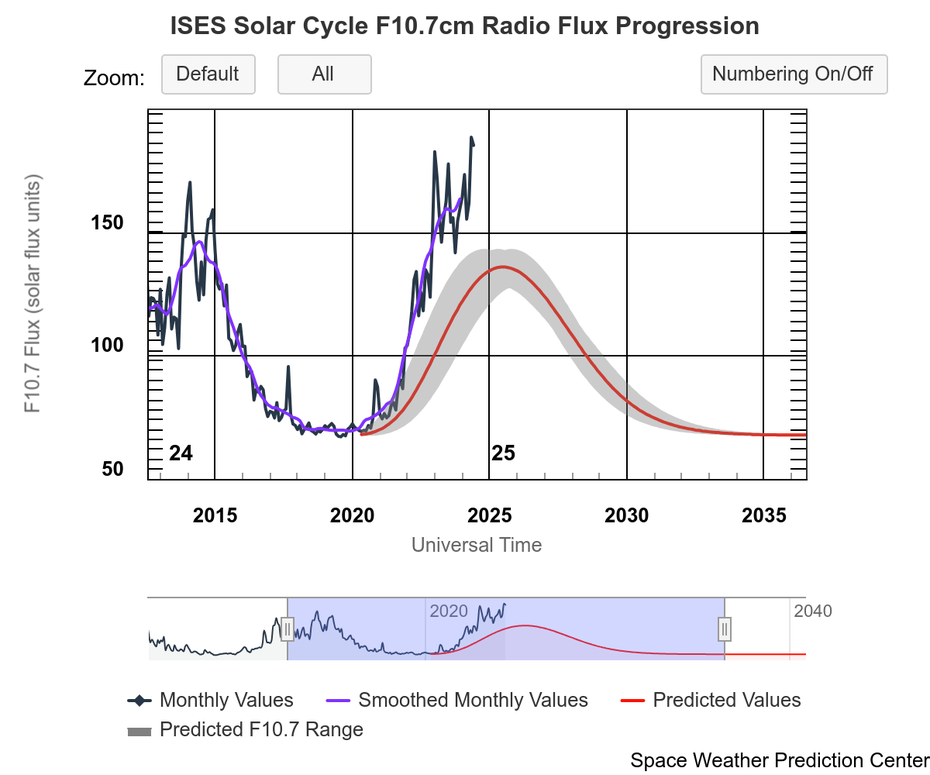In May and June 2024, more sunspots were counted than at any time since September 2002. Could this mean that the solar cycle has already peaked, contrary to previous calculations? Solar physicist Ryan French explains. space.comThat doesn't necessarily have to be the case.
Solar Cycle: Our central star follows this regularity.
Our Sun's activity follows a relatively precise 11.1-year cycle, with its activity first increasing, then increasing to a maximum, then decreasing again to a minimum. An indicator of this is the so-called sunspots, the dark, cool areas on the Sun's surface near which solar flares occur.
Editorial recommendations
This cycle was first numbered in 1852 by Swiss physicist Johann Rudolf Wolff, who laid out the first cycle in the years 1755–1766.
We are currently in the 25th solar cycle since counting began in 2019, and according to astronomers' calculations, we are slowly approaching the maximum of solar activity, which is expected to occur between July 2024 and January 2025.

Have we already reached the maximum solar activity? Data from the National Oceanic and Atmospheric Administration (NOAA) suggests so. (Graph: NOAA)
Sunbursts or Massive Explosions: Solar Minimum and Solar Maximum
During a solar minimum, there are usually no sunspots at all, and sometimes there are no solar flares or coronal mass ejections for several months.
During the peak period, the number of sunspots and their associated activity is logically particularly high. But simply counting a lot of spots in a given period of time does not necessarily lead to a solar maximum. According to the French, this is always calculated in relation to a 13-month period.
This is how scientists calculate the solar cycle
In fact, the number of sunspots is recorded daily by several research institutions. They do not just count the points, they calculate them using a specific formula so that concentrated fields do not distort the overall result.
A monthly average is then calculated from these figures, which is then plotted against the figures for the previous six months and the next six months. The solar maximum and minimum can then be read from the high and low points of this smooth curve.
This complex procedure is used because the Sun's activity is highly irregular, causing extreme fluctuations in the measurement curves, making it impossible to determine the regularity of the cycle with the naked eye.
Whether we are indeed at the solar maximum of the current cycle can only be determined with certainty over a certain distance. According to French, a clear statement on this matter could be made in late 2025 or early 2026.
20 Powerful False Color Images From NASA of Earth and Space
20 Powerful False Color Images From NASA of Earth and Space

“Total coffee aficionado. Travel buff. Music ninja. Bacon nerd. Beeraholic.”









More Stories
Coral Seeding: Artificial Insemination Makes Coral More Heat Tolerant
Fear, Anger, and Denial: How People Respond to Climate Change – Research
LKH Graz: Using radiation to combat heart arrhythmias